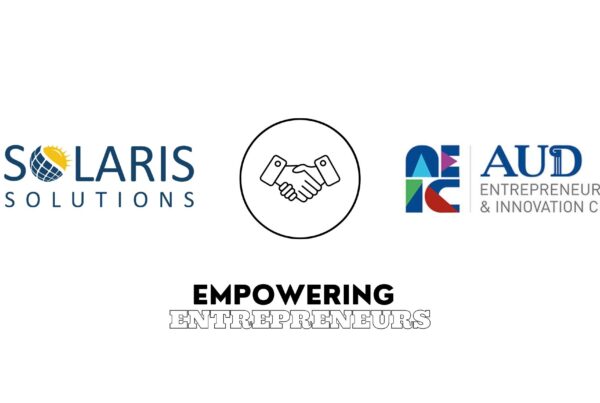I won’t start by saying that electricity is a fundamental practice in our daily life, this has become common sense. In recent decades Global access to electricity has been steadily rising as a greater share of the global population gained access to electricity. However, the number of people without access to electricity is still unacceptably high as in deficit regions and countries like Sub-Saharan Africa one can find a big community that doesn’t have access to electricity.

If the relevant authorities of countries and international organizations do not increase their investment in the electricity field, it is unlikely that everyone will have access to affordable, reliable, sustainable, and timely energy by 2030.
There is great potential for solar power generators to emerge with different capabilities and scales. Portable power stations, which can power appliances such as projectors or popcorn machines during outdoor activities, and camping trips, have emerged and can elevate your camping experience to a luxurious level, commonly referred to as “glamping.”
Well, these stations are mainly used for entertainment, power on the go source of electricity on certain occasions. In developed countries such as the US, Spain, and UAE where I live, where electric power grids are available and can be dependent on at all times. I myself have a portable solar generator station in my car trunk and the only time I use it is when we go camping with friends in the desert to keep our fridge and drone powered up and charged, and it is not something I use on a daily basis, maybe 3-4 times a month.
Case study
When comparing all that to the majority of Africa, where there is a multi-power outage lasting for hours each day. That is if there is a power grid at all in some areas. A power source or a solar generator is a necessity there granting a high level of safety and efficiency, rather than a fancy one.
Unfortunately, in places like Nigeria, we rarely see a dependent on clean sources of energy to generate electricity, on the contrary, diesel generators are being used to grant access to electricity. You can properly guess why! poverty. A cheap 1kva diesel generator can cost somewhere around $150-200. Actually, there is more than its up-front costs, like its environmental downside, plush the running-fuel cost. If you run a quick analysis of how much it would cost to fuel up a 1Kva diesel generating considering the high rise of fuel prices over a year, you will spend buying a cool solar generator. On the other hand, my fancy 1Kw solar portable generator with its fancy OLED screen and wireless charging spot cost somewhere around $670 (plus $250 for a 200W solar panel suitcase). This is where some world organizations such as the UN, the world bank, governments, and some other charitable organizations intervene to make these decentralized solutions affordable and accessible to those people in need.
I know you might say that off-grid standalone solar systems have existed for years and can provide a fundamental solution like solar generators. I would agree with you. However, a fixed solar system requires more technical attention to connect the system components together, and this can be time-consuming for us as solution providers. This limitation can also restrict the areas that we can cover, especially areas that urgently need access to electricity.
Solar power station challenges
Running this solar station on a daily basis will require some more attention to the technical aspects, taking into consideration the prevailing environmental conditions of the region in question for instance; the humidity, temperature, and dust level.


The solar portable power station contains circuit boards (power inverter & charge controller) that act as the brain of the device consists of multiple electronic components that have different properties and can get damaged if exposed to inappropriate conditions. Moisture, sand, or dust can badly affect the operation of some components which will lead to a higher number of returned systems or increase the repair sessions.
Moreover, high temperatures will have a direct negative impact on the system, especially on the battery which acts as the heart of the system. Most Li-ion batteries can only handle a charging temperature of somewhere around 45° Celsius and most portable solar generators are programmed to automatically cut off the charge at 50° Celsius. Ask me about this, the temperature of such a system can reach up to 60° Celsius based on my testing in Dubai-UAE during the summer session. Li-ion or lithium-ion batteries are known to pose a risk to users due to their tendency to catch fire at high temperatures, which is why it is recommended that you conduct research and watch videos online to learn more about these hazards. Despite their low cost and high energy density, these batteries have a tendency to drain quickly when overcharged or discharged. As you may know, it is advisable to avoid letting your phone battery die completely and then charging it up to 100%. If this is done repeatedly over the course of a year, the battery’s actual capacity will significantly decrease.
Transition to LiFePO4

So, if we like to replace the current diesel generators and convince people instead to move to use portable solar generators, we have to be able to provide a system that will run a minimum of 4 hours a day continuously without overheating or any failure. Lasting over 2 years without losing more than 10% of its real battery capacity.
To achieve that, LiFePO4 Lithium Iron Phosphate batteries should be used instead of common Li-ion NMC, and yes, I know it is less energy density and heavier in weight, yet LiFePO4 can provide 5x more cycles and 10x longer than lead acid batteries (meaning longer life spam). Also, LiFePO4 batteries are safer to run warmer, thus much harder to catch on fire when compared with Li-ion batteries. We also know how electric car manufacturers such as Tesla have moved already gradually to replace their EV batteries with LiFePO4 starting with the stander range models. That gives us a confident approach, to seeing mega corporations investing in such a technology, thus making it affordable and accessible to everyone.
In addition; With electrodes made of non-toxic materials, LiFePO4 batteries pose far less risk to the environment than lead-acid batteries. You can also reuse the materials used in the electrodes, leads, and cases and recycle them for use in new lithium batteries. In terms of the ventilation system, the cooling fan system will defiantly attract some dust and moisture which can damage the electronic components placed on the circuit board and can cause a short circuit or defective parts, therefore a viable solution should be applied such as a filter system on the fan side or create a ventilation design that only allows air to come out, or create a system that will depend fully on passive cooling.
Summary: To meet the requirements of the African market, a reliable and safe power system capable of providing uninterrupted and clean power to appliances for at least 2 years without overheating or short-circuiting its components will be necessary



